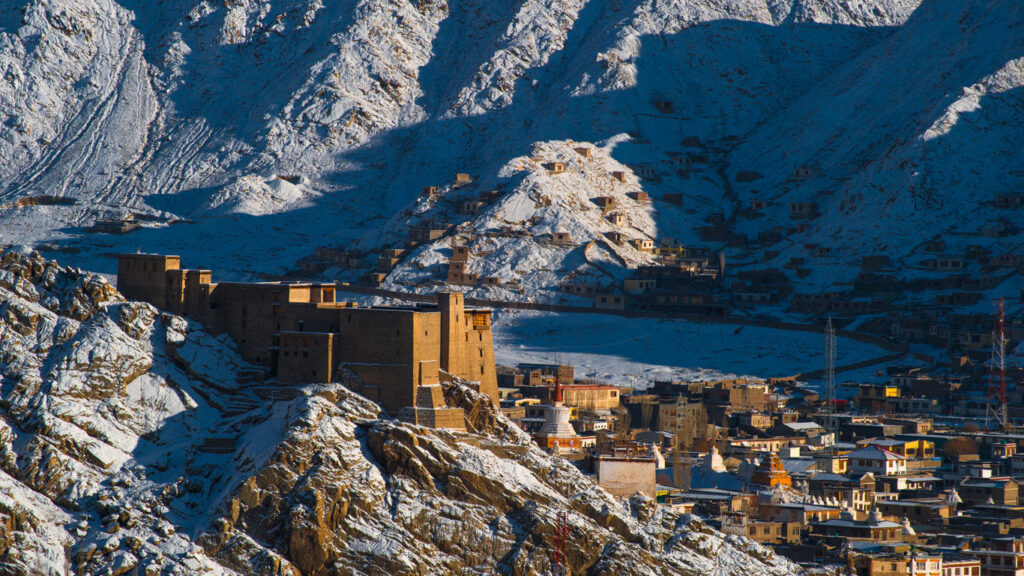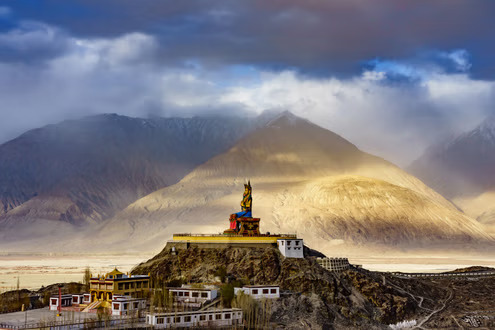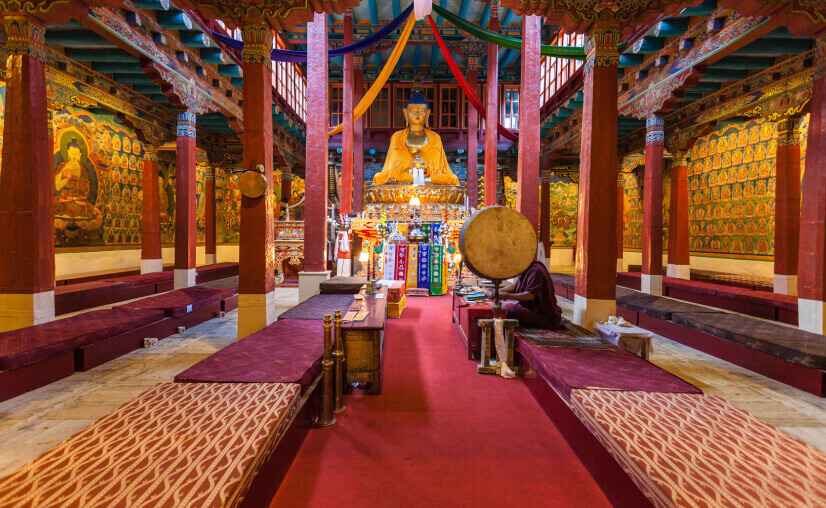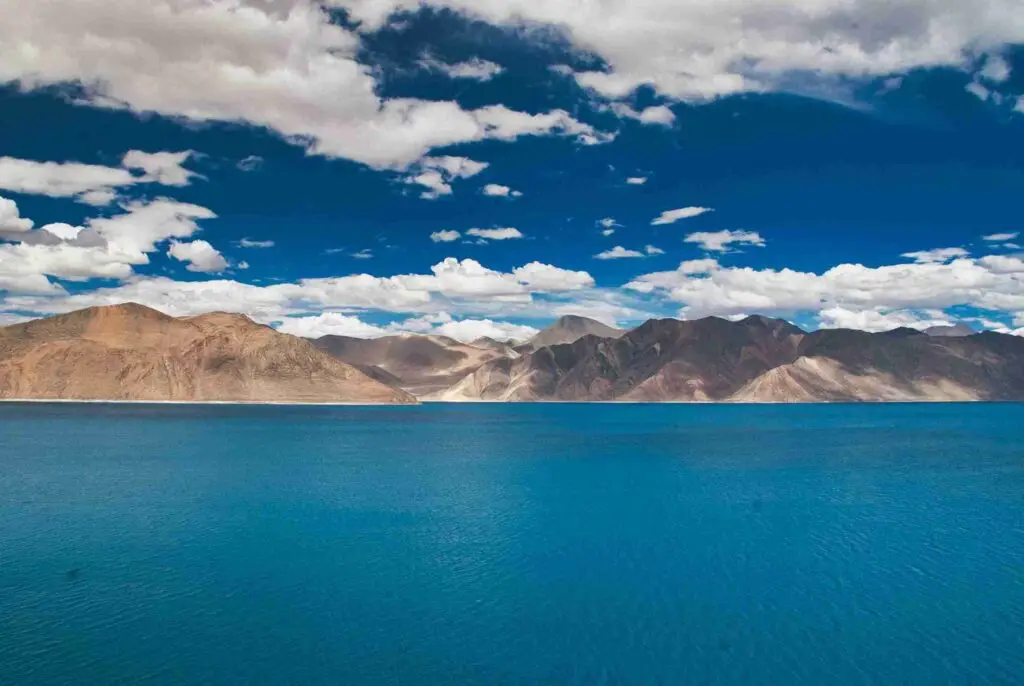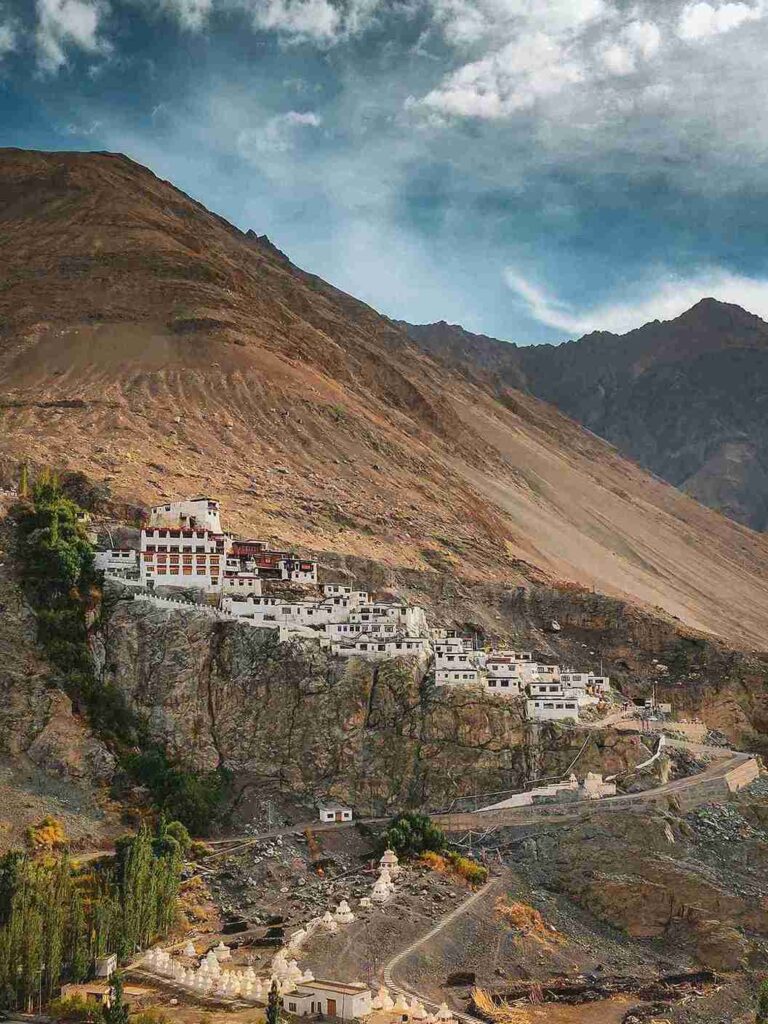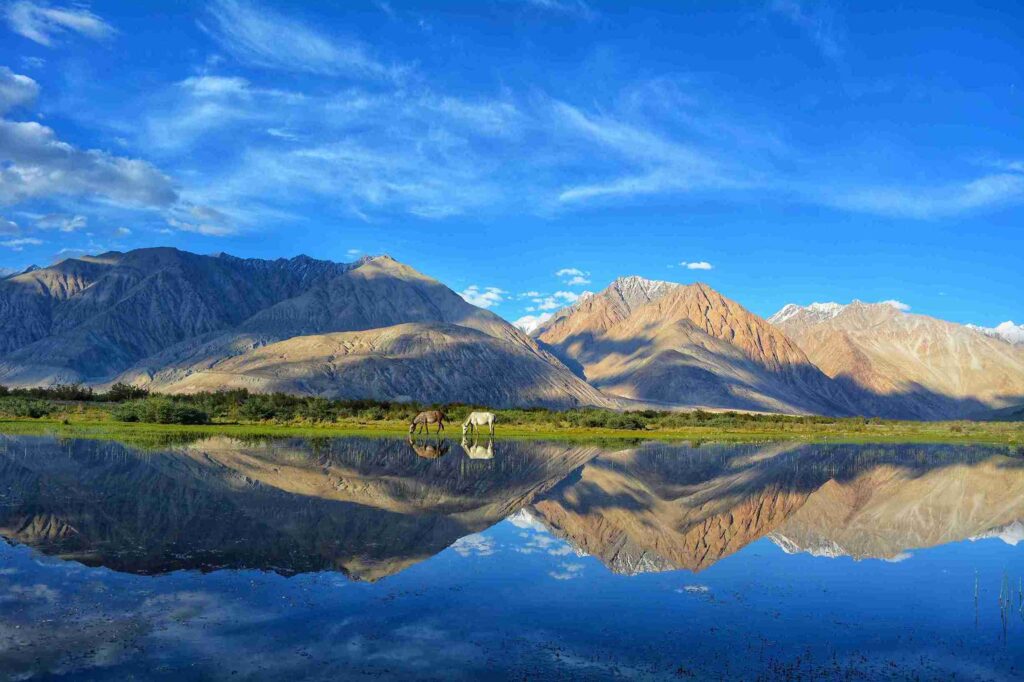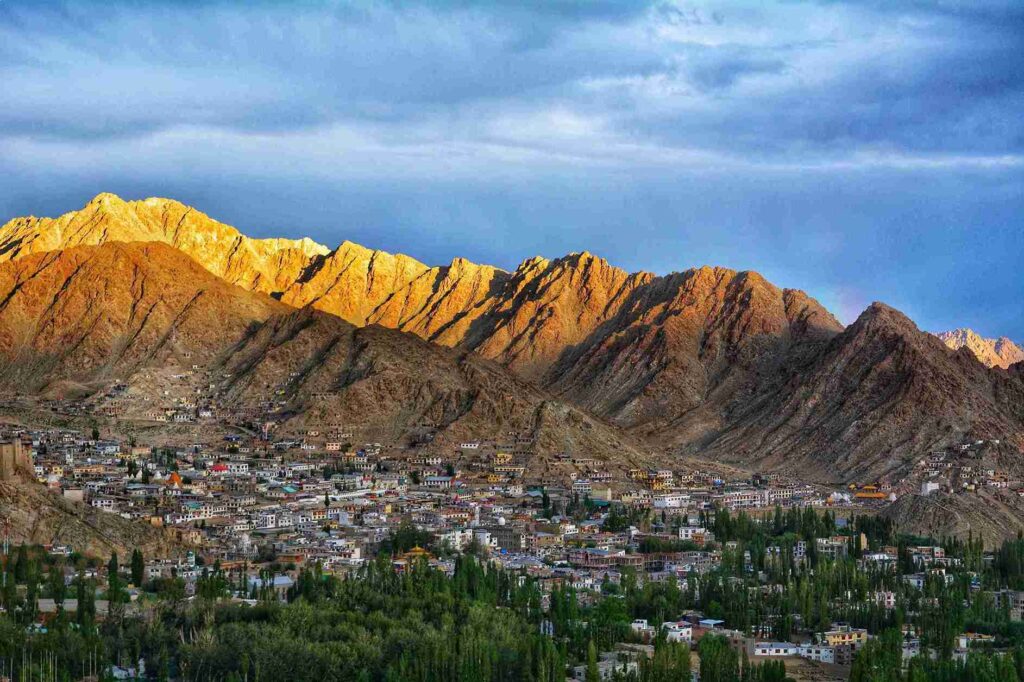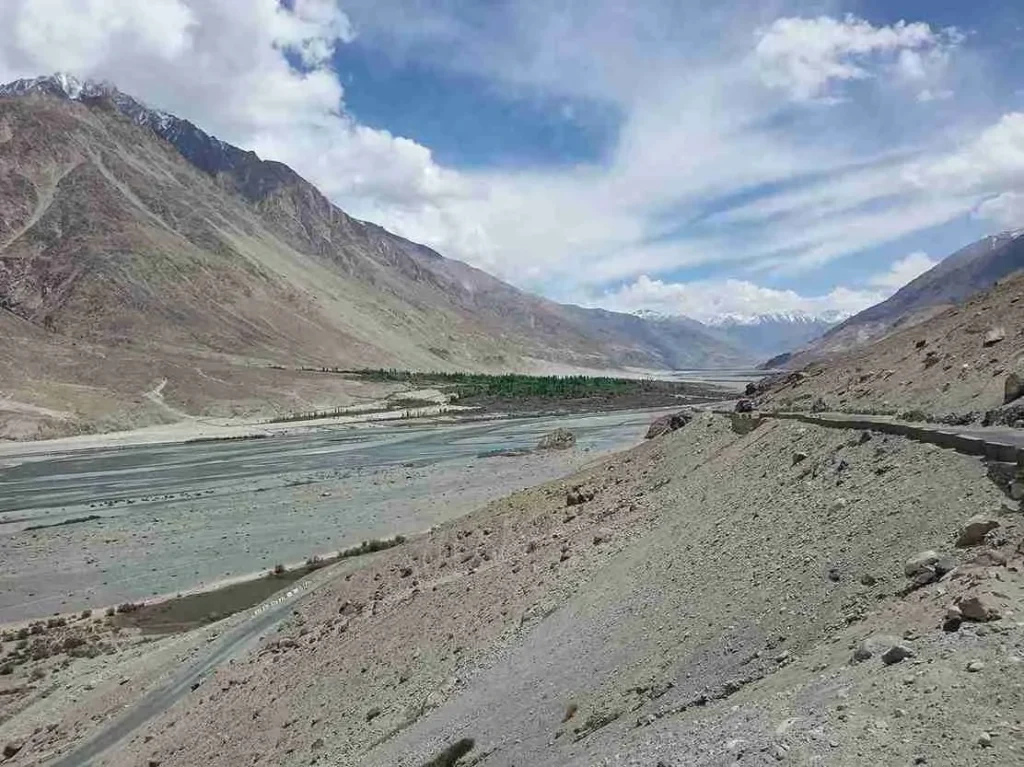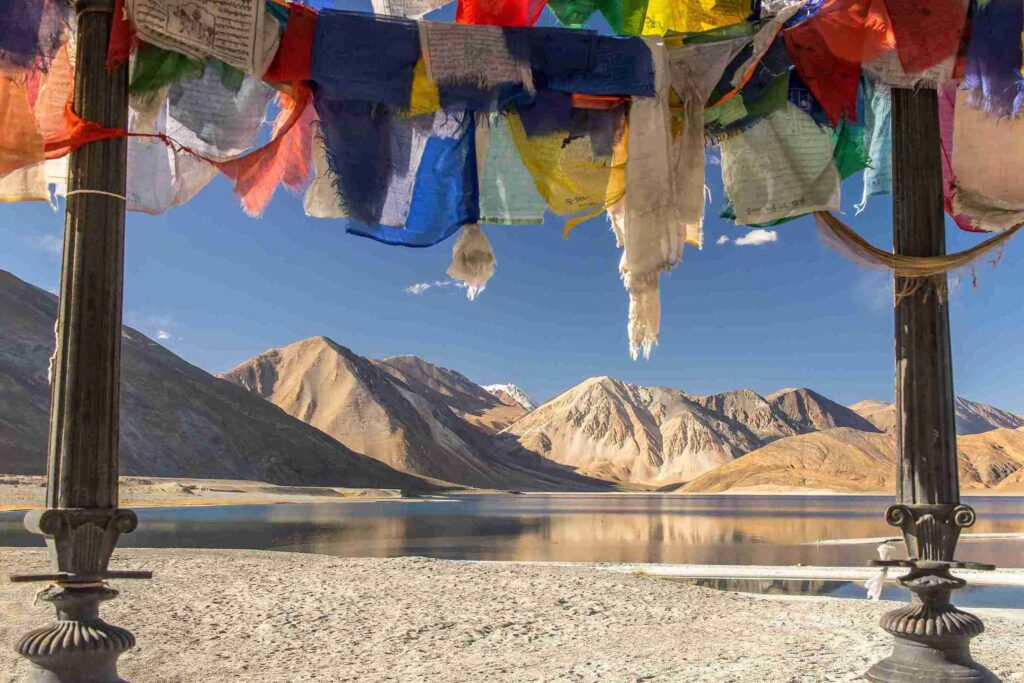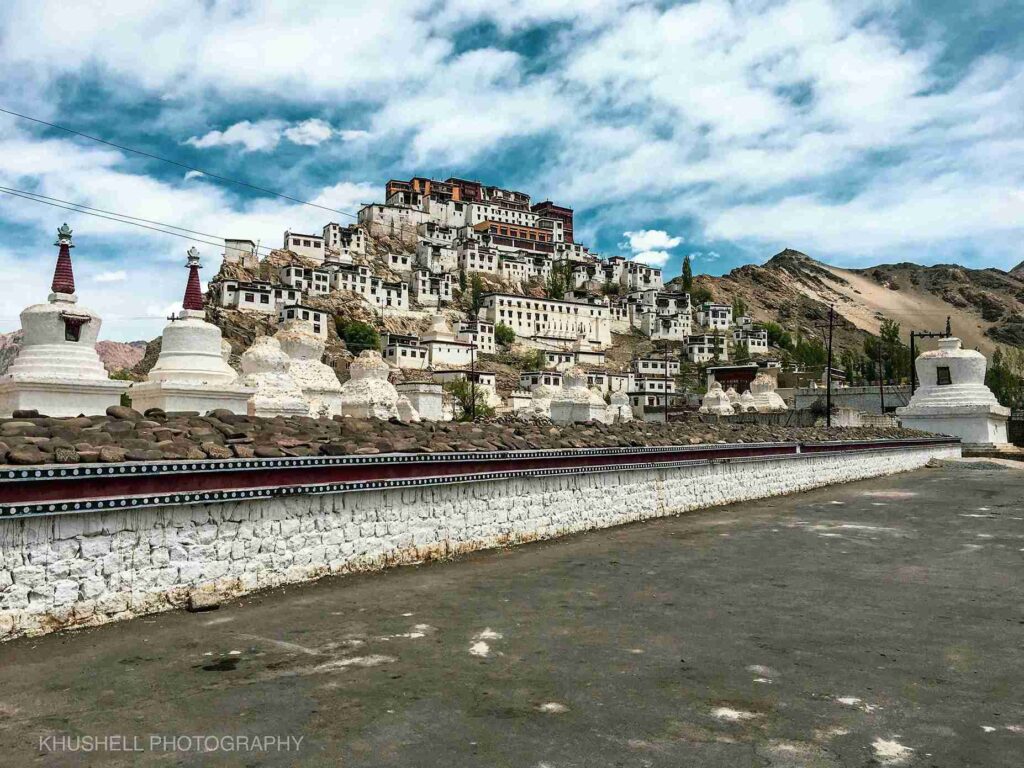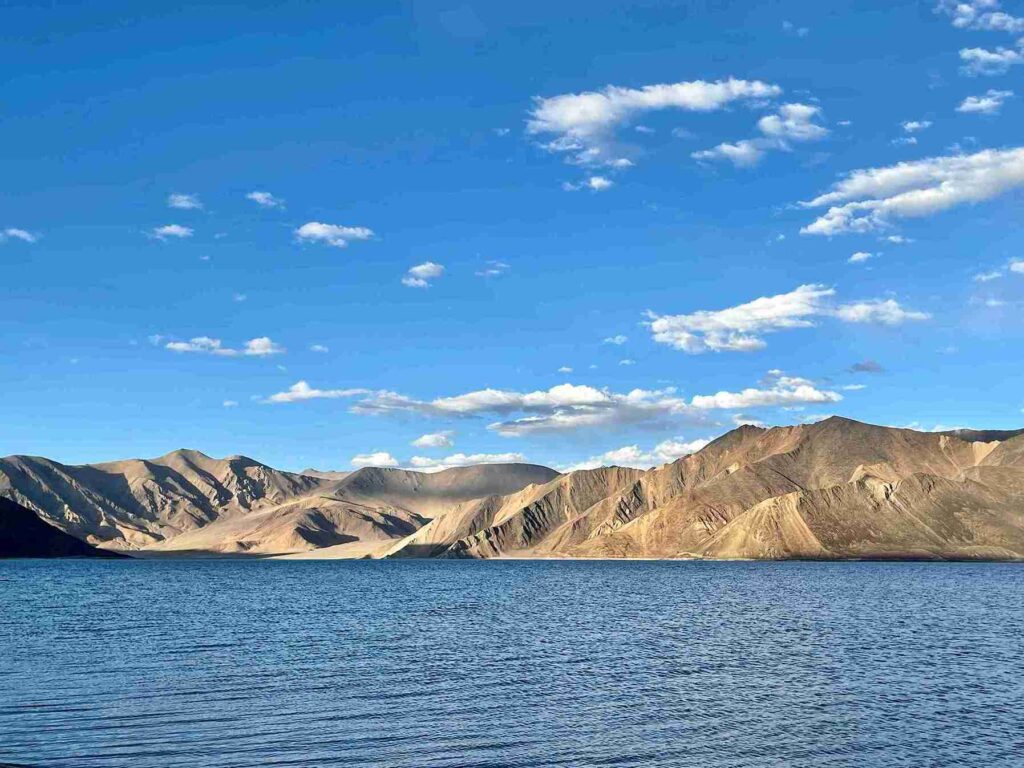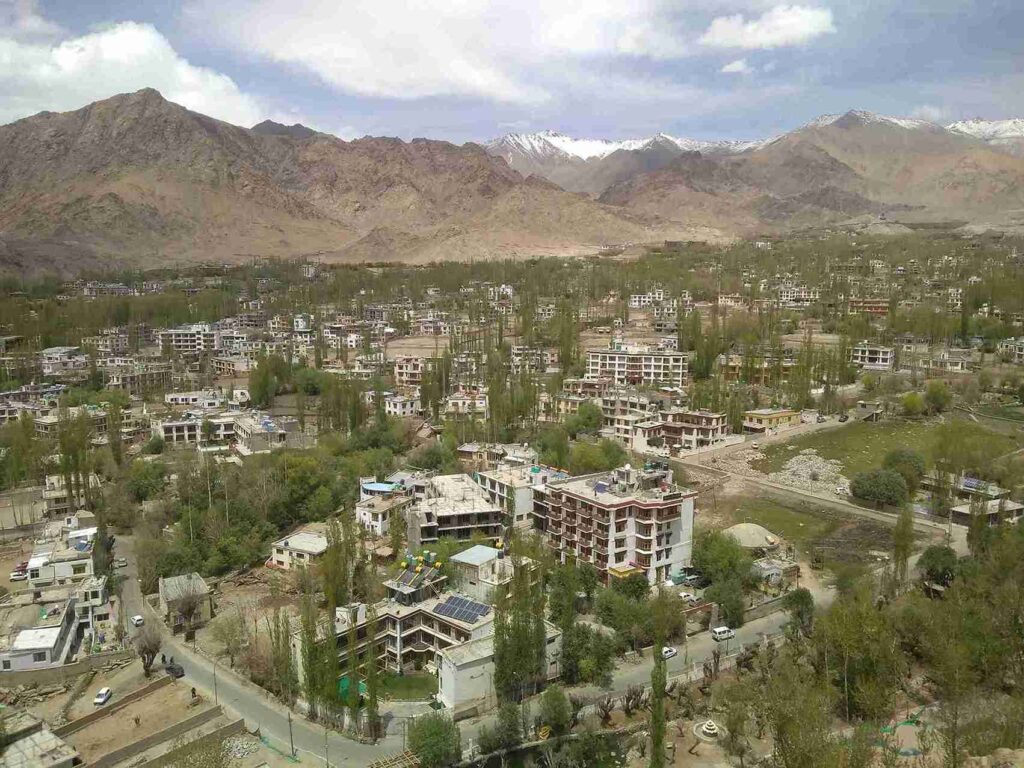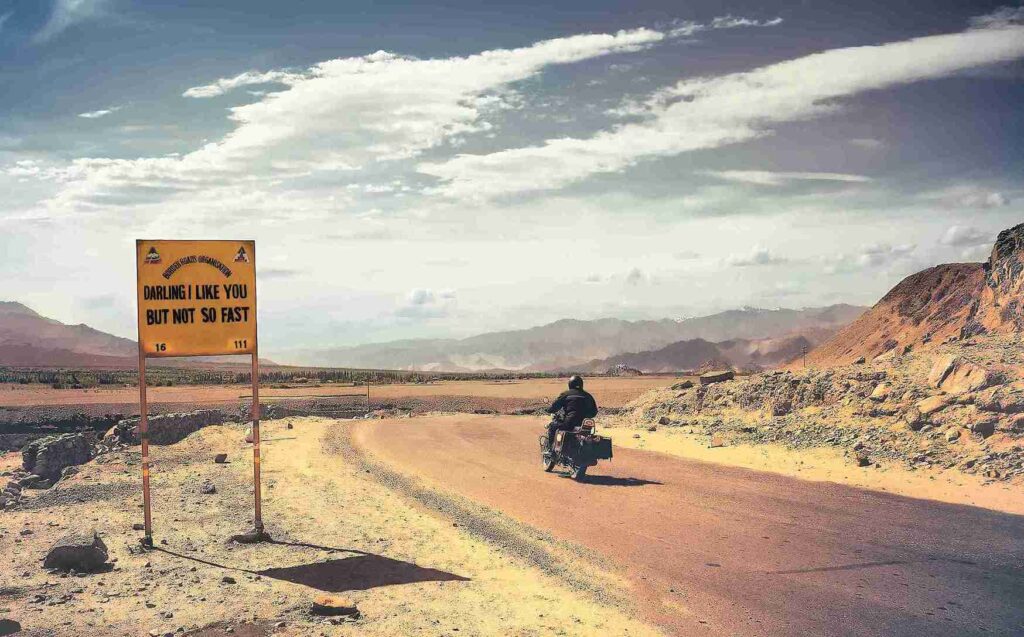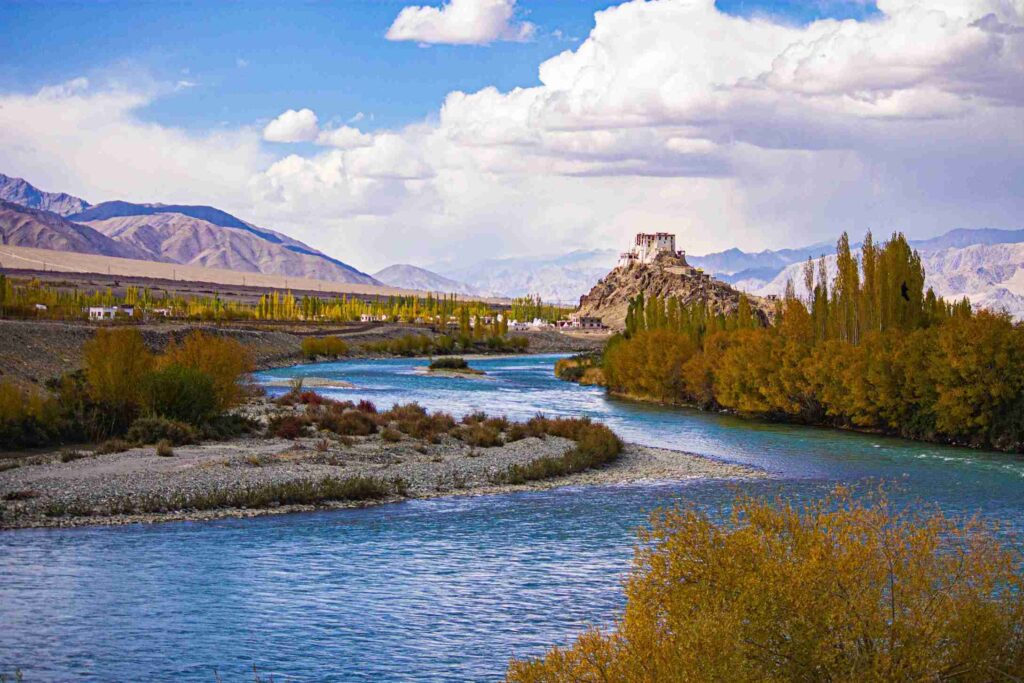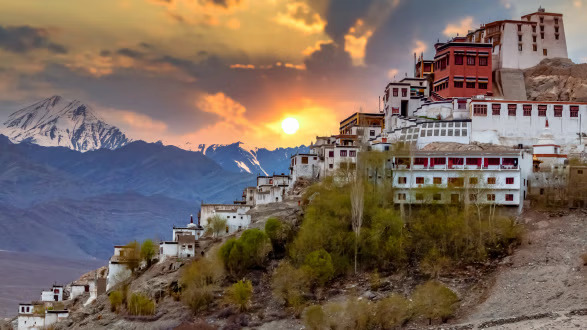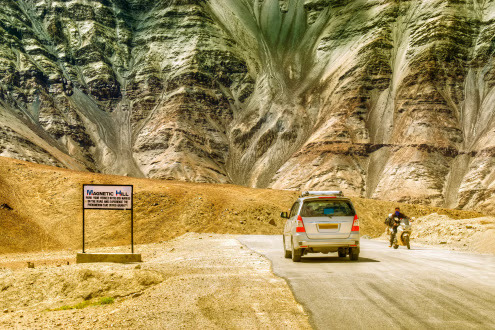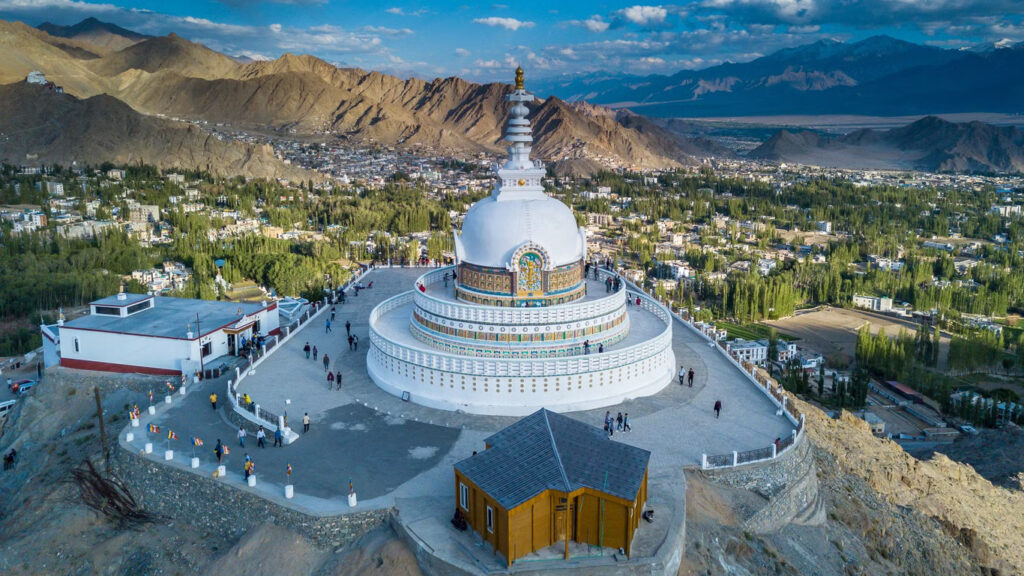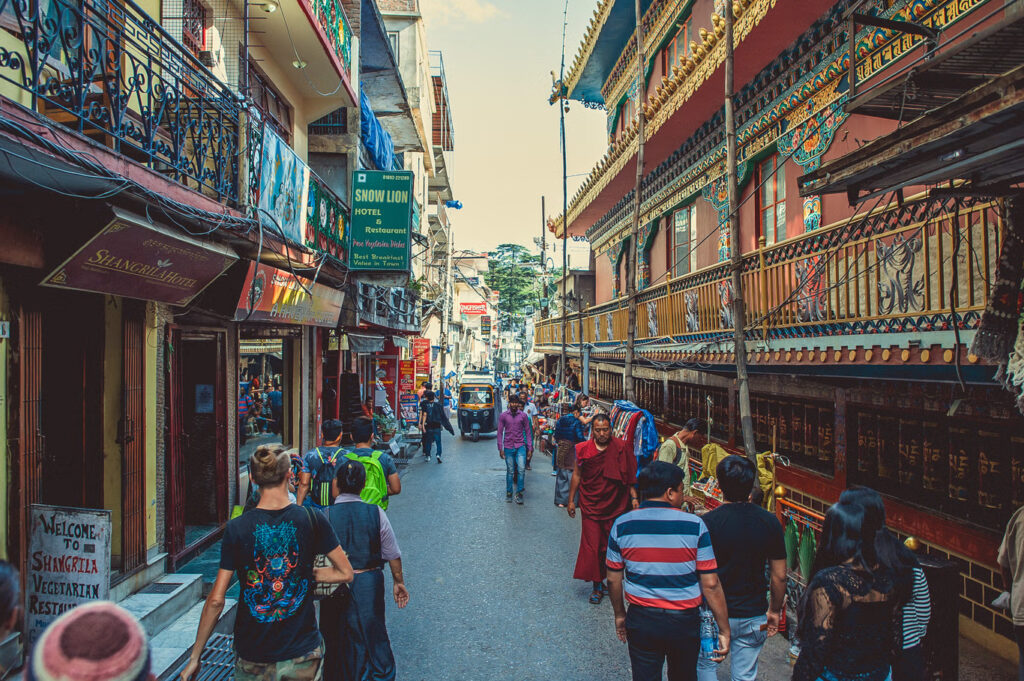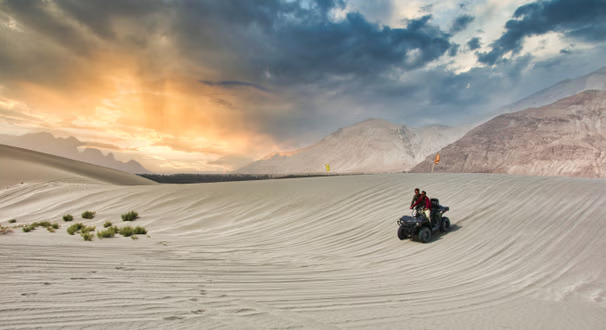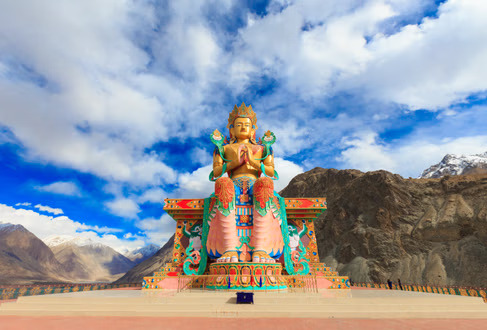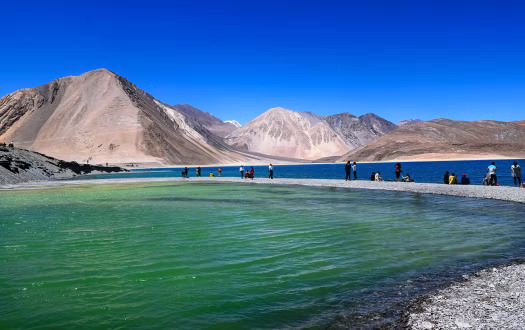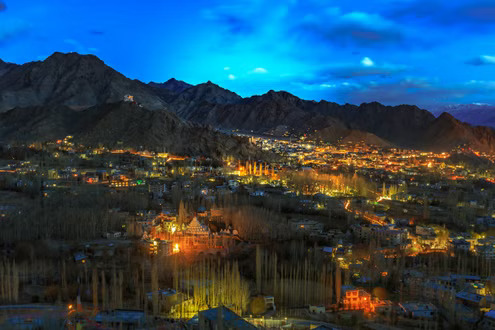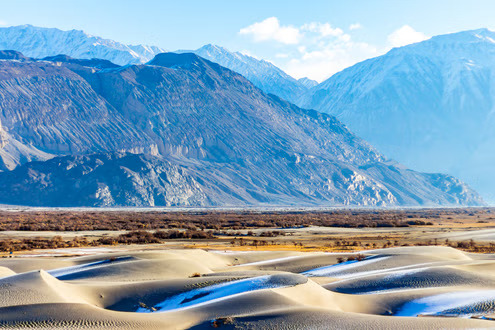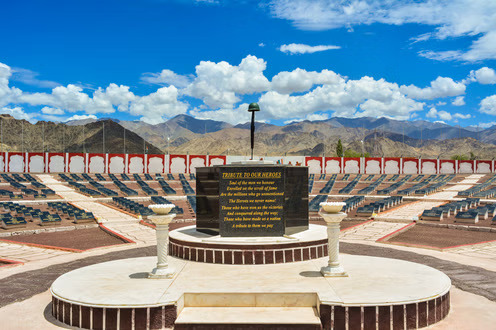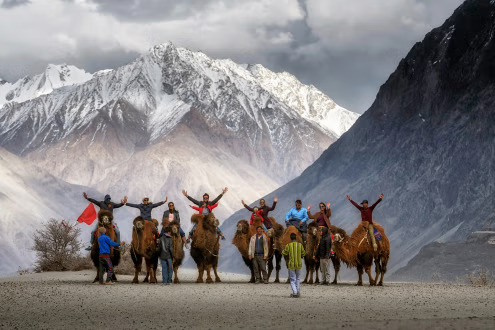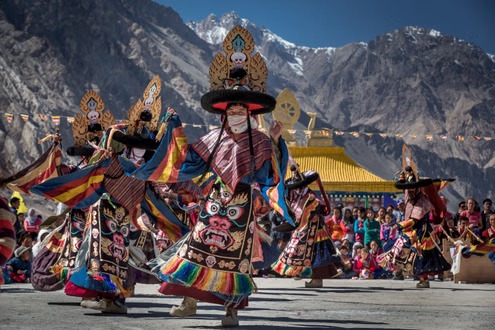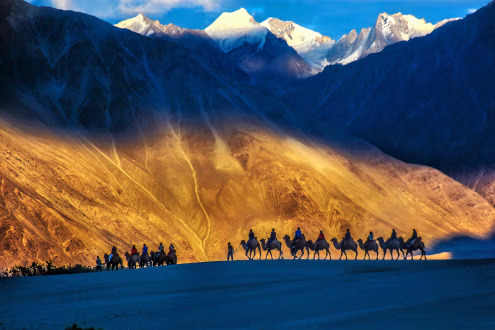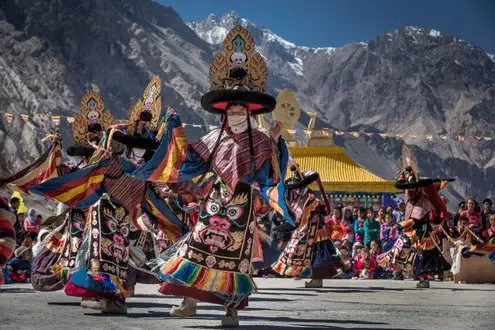Chang La pass
Chang La pass in Ladakh, India. Chang La is the main gateway to the Changthang Plateau located in Indian Himalaya. Situated at an elevation of 17,590 feet, Chang-la Pass is the gateway to the breathtaking landscapes of Ladakh. It is regarded as the “World’s third-highest motorable road,” which successfully connects Leh to the iconic Pangong Lake. While driving this pass, do not forget to immerse in the mesmerizing views of rugged terrains, fluttering prayer flags, and snow-capped peaks.
In all, this place promises an unforgettable experience, especially for thrill-seekers. Besides its spectacular views, the history of the Chang-la Pass is fascinating, grabbing the attention of many. Legends believe the pass is named after Sadhu Changla Baba. Therefore, a temple is dedicated to Sadhu Changla Baba near the pass. During the winter months between November to April, this pass remains inaccessible due to heavy snowfall and rains.
If you are a trekker, a biker, or a traveler who loves to challenge themselves with high mountains, a tour to Chang-la Pass will make you feel rejuvenated! When traveling here, you may mark your visit to the world’s highest research station set up by the Defence Research and Development Organisation. Chang La Pass remains a symbol of adventure and spiritual discovery, making it a must-visit destination on any Leh Ladakh trip.
Do Read: Things to do in Leh
Highlights
• The maximum altitude of the mighty Chang La pass is 17586 feet, making it the third highest motorable road in the world.
• A great opportunity to enjoy off-roading at one of the highest passes in India awaits you at Chang La.
• Visit the serene Changla Baba Temple, offering spiritual solace amidst nature.
• Trek towards the Chang-la Pass to satisfy your inner adventure enthusiast for an exceptional experience.
• Delve into the stunning views of the surroundings at the Chang-la Pass in Ladakh.
• Explore the third largest motorable road on a bike for a thrilling experience.
• Visitors can witness the strategic military presence at Chang La, with Indian Army personnel stationed at checkpoints along the pass.
How To Reach
By Road: Leh is the starting point for a road trip to Chang La Pass. The route to Chang La from Leh city centre involves taking the Leh-Manali Highway (NH3). Then, you must branch off onto the road leading to Chang La. The distance from Leh to Chang La is around 75.7 kilometres. The drive typically takes 2 to 3 hours, depending on the road conditions.
By Bus: Regular bus services are not available directly to Chang La due to its challenging terrain and high altitude. However, buses and shared taxis run frequently from Leh to nearby destinations like Pangong Lake, passing through Chang La. The distance from Leh to the pass is 74.3 kilometres and takes around 2 hours.
By Car: Travelling by private car or taxi is the most common and flexible way to reach Chang La. From Leh, you can reach the pass in around 2 hours, covering 74.3 kilometres. This mode allows you to enjoy the breathtaking scenery at your own pace. Ensure the vehicle is well-maintained and both the driver and passengers are prepared for high-altitude travel. The route from Leh to Chang La is straightforward. However, it demands careful driving due to steep ascents, sharp turns, and occasionally poor road conditions.
Check this out: Leh in September
Best Time To Visit
Chang-la Pass remains open during the summer season. In months between November to April, it remains closed. The best season to travel to the Chang-la Pass is the summer season, between May to September. Apart from this time period, the road is covered in heavy snow making it impossible to cross through.
Suggested Read: Things to Do in Ladakh
Other Essential Information
Maximum height: Located at 17586 feet Chang La Pass is the third highest mountain passes in the world
Inner Line Permit (ILP) is required by tourists to travel to Chang La Pass, which can be easily obtained either by applying online on the official website before commencing your journey or visiting the DC office in Leh to get the permit after you reach Leh.
Acute Mountain sickness can dampen your spirits of adventure, so it is advised you consult a physician before starting your journey to get the required medicine prescribed from him.
People suffering from Asthma, Bronchitis, and heart ailments are advised to skip this one as the climatic conditions on this route may create difficulties for them.
Due to the low oxygen levels at such high altitudes, travelers are advised to not spend more than 15-20 minutes on this route as it may affect their health. Some tourists have complained about feeling out of breath.
Mountains generally have dry air, which can lead to dehydration. You must drink plenty of water to keep yourself hydrated.
Camping
There’s nothing better than camping under the star-lit sky on your holiday in Ladakh. The unmatched landscape of lofty barren mountains make for the perfect background and the alpine lakes create the ideal views for enjoying the best camping experience in Ladakh.
There are two types of camping that one can enjoy immensely in Ladakh – leisure camping and adventure camping. Leisure camping can be relished at some of the most beautiful places in Ladakh like along the Pangong Tso, Tso Moriri; in the beautiful Hunder Village of Nubra Valley; and areas around Leh.
On the other side, adventure camping has a wider scope in Ladakh. Adventurers can camp at lesser-known yet gorgeous places. The best experience of adventure camping is during trekking in Ladakh, where you get to pitch your tent at some of the most picturesque places that include confluences of rivers, alpine meadows, amongst the nomadic tribes and even at places in Zanskar Valley that have views to die for.
Best Places for Camping in Ladakh
Hunder Village
Tso Moriri
Pangong Tso
Thiksey
Zanskar Valley
Best Time for Camping in Ladakh
From June to September is the best time for camping in Ladakh.
Fairs & Festivals
The fairs & festivals of Ladakh, marked by beautifully synchronised masked dances, Buddhist rituals, ceremonies of various types & vigorous celebrations, are an integral and important part of Ladakh tourism. They offer an extremely useful insight into the heritage & culture of the people of Ladakh.
The influence of Tibetan Buddhism on this region is especially strong, and naturally, this is reflected in the festivals which are celebrated. Domestic as well as international tourists attend these festivals during their holidays in Ladakh in large numbers, since they offer an experience which is exclusive to this region. Attending the festivals in Ladakh also gives you an idea of the cultural diversity of Ladakh.
Most Famous Fairs & Festivals in Ladakh
Some of the fairs & festivals held in Ladakh attract tourists from both India and abroad. They are extremely famous because of their grand celebrations, cultural significance & also because they attract people from all over the region. Here are some of them.
Jeep Safari
The adventure of jeep safari in Ladakh is both thrilling and comfortable at the same time. But it mostly promises an enthralling experience of witnessing the wild and amazing Ladakh from close quarters. The expansive valleys, through which runs rivers and streams; the endless snakey roads; the dirt trails; remote villages and hamlets; the sacred monasteries; and some of the world’s highest mountain passes, all these can be explored in the best way in your 4X4 vehicle in Ladakh.
Even though, jeep safaris in Ladakh make almost all the destinations in the union territory accessible, the adventure activity is mostly preferred on routes like Leh-Khardung La-Nubra Valley, Manali-Leh Highway via the popular Gata Loops; Leh -Pangong -Tso Moriri; and Kargil-Suru Valley-Zanskar. Jeep safari in Ladakh is an experience to remember forever.
Popular Jeep Safari Routes in Ladakh
Srinagar – Leh
Manali – Leh
Nubra Valley via Khardung La
Kaza-Keylong-Sarchu-Leh
Kargil-Suru Valley-Zanskar
Leh-Pangong-Tso Moriri
Best Time for Jeep Safari in Ladakh
The months between June and September are ideal for a jeep safari in Ladakh. Since during this time Zoji La and Rohtang Pass are open for reaching Ladakh from Srinagar and Manali, respectively.
Monasteries
About Monasteries in Ladakh
The monasteries in Ladakh complement the beauty of its rugged landscape, and are the centre points around which the spiritual and religious life of its Buddhist population revolves. There are many things that go into making the Ladakh monasteries famous, including architecture, legend and location. Some rest precariously on rocks beside unimaginably deep cliffs, while others are overlooked by craggy peaks and barren mountains, for which Ladakh is famous. Visiting the famous monasteries of Ladakh is not something that you should miss out on during your trip to Ladakh, as it’s one of the best ways of gaining an insight into its rich history and heritage.
Most Famous Monasteries of Ladakh
Thiksey Monastery
Karsha Monastery
Hemis Monastery
Alchi Monastery
Mountain Biking
Unarguably, Ladakh is the paradise for mountain bikers. The meandering roads cutting their way through the awe-inspiring scenery is where all the mountain biking inspiration can be found. Cycling in Ladakh is about riding through the rugged trails or along the rushing Indus and Zanskar Rivers or to some high mountain passes like Khardung La.
Mountain Biking in Ladakh is not only about adrenaline rush and facing the challenges, it is also a great way to witness the culture and traditions of varied regions. This adventure activity in Ladakh is also perfect to explore the offbeat Buddhist Monasteries and relishing the lesser-known side of this beautiful Himalayan destination in India.
Best Mountain Biking Places in Ladakh
Pangong Tso
Warila-Khardungla-Nubra & Sham
Spangmik Man, Merak and downhill from Changla
Leh to Zingchen
Skiu to Chilling
Stok, Stakna & Thiksey Monasteries.
Leh to Sankar Gompa, Shanti Stupa, and Namgyal Tsemo
The best time for a cycling tour in Ladakh is between June and September when the snow has melted completely and all the roads are open again.
Things to Know about Mountain Biking in Ladakh
Book your mountain biking tour with an experienced travel agency.
Some of the biking routes require trekking as well.
One also has the chance to enjoy river rafting along with mountain biking in Ladakh.
Cultural tours can also be included with your cycling adventure in Ladakh
Pilgrimage
Home to hundreds of Buddhist monasteries, Ladakh is undoubtedly one of the most important Buddhist pilgrimage destinations in India. Centuries old monasteries are nestled in the lofty mountains of Ladakh. There are pilgrimage destinations situated not only at the popular places to visit in Ladakh but in the remote corners as well. Amongst the top pilgrimage places in Ladakh is its acclaimed Shanti Stupa in Leh City.
Even though the devotees can pay obeisance throughout the year at the Buddhist monasteries in Ladakh, planning a pilgrimage tour around the religious festivals is deemed an ideal plan. Amongst the most important religious places in Ladakh are Hemis Monastery where the Hemis Festival takes place; Lamayuru Monastery where Yuru Kabgyat is celebrated; and Phyang Monastery where Phyang Tsedup takes place. Thiksey, Spituk, Karsha, Likir, and Diskit monasteries, all have an annual festival that can be planned to be witnessed on your spiritual tour in Ladakh.
Popular Pilgrimage Attractions in Ladakh
Hemis Monastery : Re-established in the 17th century, Hemis Monastery is reckoned to be the richest monastery in Ladakh. The monastery is home to a library of Tibetan books and an impressive collection of Thangkas, gold statues and Stupas embedded with precious stones.
Lamayuru Monastery : One of the largest and oldest monasteries in Ladakh, Lamayuru Monastery is one of the top attractions. It is in fact considered the first Bon Gompa that could once accommodate 400 monks.
Shanti Stupa : Built in 1991by Japanese Bhikshu, Shanti Stupa was erected in Leh as a part of the Peace Pagoda mission. The stupa has the relic of Buddha at its base. It is amongst the top places to see in Leh city.
Thiksay Monastery : Resembling the Potala Palace in Lhasa, Tibet, Thiksay Monastery is the largest gompa of central Ladakh. It is a 12 storey building and is known for housing a 15 metres (49 ft) high statue of Maitreya, the largest statue in Ladakh.
Alchi Monastery : Reckoned to be the oldest and most famous monastery in Ladakh, Alchi is basically a monastic complex that is situated in Alchi Village. The temple complex has three major shrines – the Dukhang, the Sumtsek and the Temple of Manjushri built between the 12th and early 13th centuries.
Diskit Monastery : The oldest and largest monastery in Nubra Valley Region, Diskit Monastery belongs to the Gelugpa (Yellow Hat) sect of Tibetan Buddhism. Opposite the monastery sits a 32-meter tall statue of Maitreya Buddha.
Phyang Monastery : Known for its 900-year-old museum, Phyang Monastery is a 16th century gompa in Ladakh. It is also famous for its religious festival of Gang-Sngon Tsedup.
Chemrey Monastery : Notable for its high Padmasambhava statue, Chemrey Monastery belongs to the Drugpa monastic order. It is also known for its 29 volume scripture written in silver and golden letters. Stok Monastery : A 14th century monastery, Stok is known for its library that has a collection of 108 volumes of the Kangyur. Close to the monastery is the statue of a 22 m tall Gautam Buddha.
River Rafting
In the land of adventure, river rafting adds to another top experience you don’t want to miss in Ladakh. The best places to enjoy river rafting in Ladakh are its two popular rivers – Indus and Zanskar that have rapid grades ranging from I to V. However, most of the stretches of these rivers have Grades I to III. The rapid range in Ladakh indicates that the adventure of river rafting can be enjoyed by beginners as well as experienced ones. Adding to this adventure activity is the unparalleled views of remote villages and the lofty barren mountains which make it an experience to remember forever.

